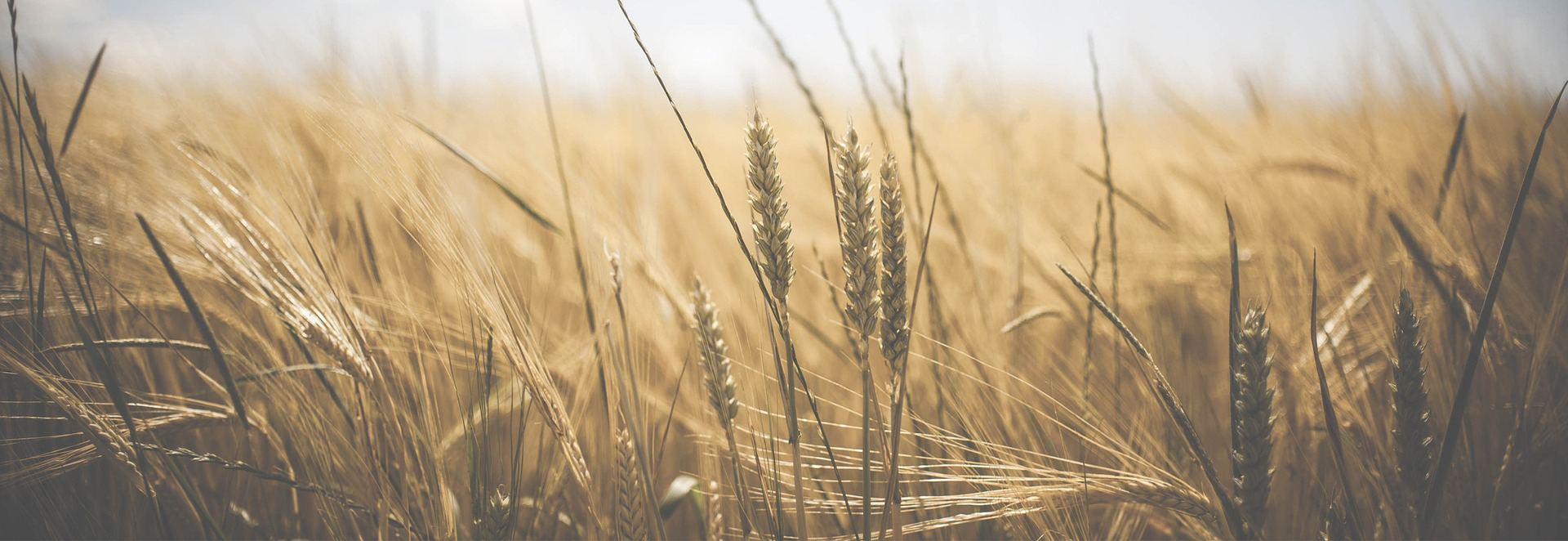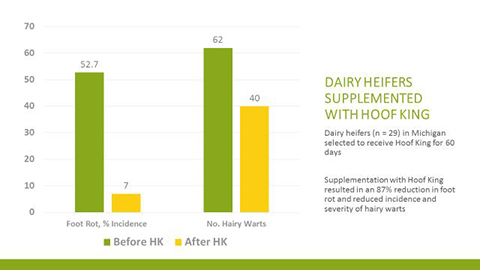
Days are getting longer, the weather is getting warmer, and pastures are starting to green up. The joys of springtime! But spring also brings rain, mud, and wet bedding, all of which can be a challenge to livestock and livestock producers everywhere. This combination of warm and damp conditions is the perfect breeding ground for all kinds of disease organisms which can cause havoc in any livestock operation. So how can you improve hoof health among your herd?
Hoof and lameness issues can happen at any time of the year, but spring can be especially troublesome. For grazing herds, cows are transitioning from a winter spent in the barn with little exercise to having to walk possibly several miles a day for food, water, and milking. Soft hooves can be susceptible to stone bruises and cracking which can lead to infections. Cattle can be standing knee-deep in mud in lots that were frozen only a few weeks before. These conditions can be conducive for the growth of organisms that cause foot rot and digital dermatitis (hairy heel warts).
Lameness is a serious problem on many dairies. Estimates on the incidence of lameness on North American dairies have ranged from around 18% (Evink and Endres, 2017) to as high as 55% (von Keyserlingk et al., 2012), with many variations among different geographic regions, herd sizes, and stall and bedding types. Since lameness is usually associated with decreased milk production and reproduction as well as increased culling rates, it is imperative that producers do everything they can to keep lameness at a minimum. The overall cost of lameness (including lost milk, decreased fertility, and cost of treatment) can range from $120.70 per case of foot rot to $132.96 for heel warts and $216.06 for sole ulcers (Cha, et al., 2010). Genetics, stall comfort (including stall design and bedding material), hygiene, and alleyway surface can all have major impacts on the incidence of lameness. However proper nutrition can also contribute to increased hoof health and decreased lameness.
Agri-King developed Hoof King® to promote the growth of healthy hooves in cattle, horses, and swine to keep them sound and more productive. Hoof King® promotes stronger hooves by providing a unique combination of nutrients necessary for proper hoof growth and maintenance.
Copper, zinc, and iodine are all supplied in organic forms that have increased availability and efficacy when compared to inorganic sources. A field trial conducted in Michigan with dairy heifers exhibited a dramatic decrease of footrot and hairy heel warts in heifers fed Hoof King® for 60 days (see diagram).

These ingredients will help improve hoof health will also improve teat health as well. The keratin lining of the teat canal is the first line of defense against invading organisms which can cause mastitis. A healthy teat end, sphincter, and teat canal combine to help reduce the incidence of intra-mammary infections. The added copper, zinc, and Vitamin E also promote a healthy immune system with their antioxidant functions and also by improving the function of phagocytic white blood cells which fight these invading pathogens. Since a single case of clinical mastitis in early lactation can cost the dairy producer as much as $444 (Rollin et al., 2015), producers must do everything possible to try to prevent it. Feeding Hoof King® provides a solid foundation for a healthy, high-producing animal! AK
References
Cha, E., J. A. Hertl, D. Bar, and Y.T. Gröhn. 2010. The cost of different types of lameness in dairy cows calculated by dynamic programming. Prev. Vet. Med. 97: 1-8.
Elvink, T. L., and M.I. Endres. 2017. Management, operational, animal health, and economic characteristics of large dairy herds in 4 states in the Upper Midwest of the United States. J. Dairy Sci., 100: 9466-9475.
Rollin, E., K.C. Dhuyvetter, M.W. Overton. 2015. The cost of clinical mastitis in the first 30 days of lactation: An economic modeling tool. Prev. Vet. Med. 122: 257-264.
von Keyserlingk, M.A.G., A. Barrientos, K. Ito, E. Galo, and D.M. Weary. 2012. Benchmarking cow comfort on North American freestall dairies: Lameness, leg injuries, lying time, facility design, and management for high-producing Holstein dairy cows. J. Dairy Sci., 95:7399-7408.